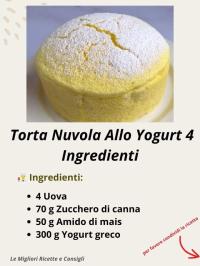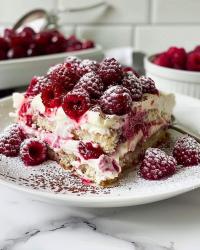Copy Link
Add to Bookmark
Report
Cider Digest #1204

Subject: Cider Digest #1204, 2 March 2005
From: cider-request@talisman.com
Cider Digest #1204 2 March 2005
Forum for Discussion of Cider Issues
Dick Dunn, Digest Janitor
Contents:
Re: frozen juice vs Frozen fruit for ice wine (Michael Faul)
Re: Cider Digest #1203, 27 February 2005 (John Ross)
Re: Ice cider (Benjamin Watson)
Ice Cider - made by marketing? ("McGonegal, Charles")
Cryo-concentration tips. ("McGonegal, Charles")
Re: Ice Cider (Claude Jolicoeur)
Send ONLY articles for the digest to cider@talisman.com.
Use cider-request@talisman.com for subscribe/unsubscribe/admin requests.
When subscribing, please include your name and a good address in the
message body unless you're sure your mailer generates them.
Archives of the Digest are available at www.talisman.com/cider
----------------------------------------------------------------------
Subject: Re: frozen juice vs Frozen fruit for ice wine
From: Michael Faul <mfaul@rabbitsfootmeadery.com>
Date: Sun, 27 Feb 2005 10:32:02 -0800
Like ice wine from grapes the legal issues are that the wine must be
made from the juice expressed from frozen fruit harvested at a certain
temperature. In the case of ice wine from grapes, there is a 'legal'
distinction about where the grapes can come from Latitude xx or further
north if I am not mistaken. The Canadian government is 99% responsible
for this as they want to make the production of ice wines limited to
Canada and no where in the USA or via the fruit freezing method.
The Canadian government states;
"Ice Wine
Ice wine means any wine produced one hundred percent (100%) from grapes
of an authorized grape variety, as set out in Section 9, that have been
harvested naturally frozen on the vine at minus 7 degrees Celsius or
colder. The pressing must take place immediately following the harvest
in a continuous process, within the recognized viticulture area in which
the grapes were grown. Artificially induced freezing is prohibited at
any point in the process and a minimum of at least 32 brix (132 Oechsle)
is required as a computed average."
I read the same description for ICE Wines produced from apples somewhere
I'll see if i can dig it up.
So a more important question is what type of yeast to use? How long to
ferment and at what point does fermentation stop or is halted? I can run
an experiment on the 'frozen juice' idea at any scale up to several
thousand gallons. I'd be willing to do a test batch if someone had some
ideas on the starting brix, ending brix, yeast to use etc.
Mike
> then leave the juice out on a cold night. Once the juice was partially
> frozen, one could remove the ice layer which would form on the surface
> and there would be your concentrated must without the hassle of
> pressing frozen apples. This seems to me like it would be a great deal
> easier if one had the appropriate container, although I suppose that
> beyond a fairly limited scale it would become impractical. Is there
> some benefit of pressing the frozen fruit which this technique would
> eliminate?
------------------------------
Subject: Re: Cider Digest #1203, 27 February 2005
From: John Ross <johnross@halcyon.com>
Date: Sun, 27 Feb 2005 12:07:50 -0800
At 2/27/2005 10:00 AM, Bradley Hunter wrote:
>Would anybody out there have any information about this grinder, it's
>age and possible origin? Any websites that might discuss antique
>grinders?
It sounds similar to my antique press, but I don't have any background
information. I've seen several similar presses and grinders at the
Steliacoom Apple Squeeze and offered on eBay, so I think they were pretty
widely distributed. Maybe through the Sear or Monkey Ward farm catalogs.
Mine has an extra gear wheel on it, which look like it could have been
connected to a tractor motor or something. Dunno if that was standard or if
it was somebody's add-on "feature."
I have found that there is very little historical or technical information
out there about the design and manufacture of old cider presses. It would
seem like there ought to be a book or two, and maybe a web site, but I've
never found them. Unlike other old technology -- telephones, barbed wire,
toy trains and so forth -- there doesn't seem to be a lot of orgainzed
information about old farm machinery outside of reprints of Sears catalogs.
I have absolutely no idea if there were a couple of dominant cider press
makers a hundred years ago, or if there were smaller manufacturers in each
major apple-producing area. For that matter, how big was the market? Were
there companies who were specialists in cider presses, or was it just one
part of a larger farm-equipment product line?
John Ross
Seattle
------------------------------
Subject: Re: Ice cider
From: Benjamin Watson <bwatson@worldpath.net>
Date: Mon, 28 Feb 2005 08:08:40 -0500
Jason MacArthur wrote:
> In Cider Digest #1201, in response to a question of mine regarding
> ice cider, Claude Jolicoeur wrote that in order to make ice cider, the
> idea is to press the apples while they are partially frozen. It occurs
> to me that it would be much easier to grind and press unfrozen apples,
> then leave the juice out on a cold night. Once the juice was partially
> frozen, one could remove the ice layer which would form on the surface
> and there would be your concentrated must without the hassle of
> pressing frozen apples.
I'm treading on thin ice, so to speak, since I haven't yet made my
first batch of ice cider -- I've been promised a gallon of must for
research purposes this month. But from what I've gleaned thus far, I'm
given to understand that to call the product cidre de glace/ice cider
in Quebec that it must be made from milled and pressed frozen fruit,
not from juice that has been left out to freeze.
I don't know if this is just a guild thing -- theoretically I suppose
Jason is correct in thinking that the product would be similar using
either method, since all you are doing is removing water and
concentrating the cider. However, I can say that, given my experience
with making applejack or cider oil, which also involves concentration
by fractional crystallization, I would say that one objection to
freezing the juice rather than the fruit is that you presumably don't
get a "layer" of ice on top, since cider doesn't freeze in the same way
as water but rather forms "slip" ice -- which is why it pushes out of
the top of a frozen container rather than breaking the bottle.
So I suppose you would have to freeze the juice repeatedly and draw it
off the water ice matrix, and maybe refreeze the stuff to concentrate
it further, as you do with applejack -- measuring the Brix until you
get it where you want it. On a small scale this is undoubtedly
possible; on a larger scale I'm not sure how this would work --
probably it would involve a lot of fairly expensive equipment.
Ben Watson
Francestown, NH
------------------------------
Subject: Ice Cider - made by marketing?
From: "McGonegal, Charles" <Charles.McGonegal@uop.com>
Date: Mon, 28 Feb 2005 09:47:12 -0600
I suppose that't a bit of a troll-like title, oh, well :-)
I believe that one of the reasons that folks see several different ways
to make 'ice cider' is that there's isn't consensus on what it actually
is. 'Ice cider' as a term is part concept, part marketspeak, and part
protective legistalation in order to make the marketspeak more valuable.
The Canadian group that protects the term 'ice wine' - doesn't cover
'ice cider'. I've been told they specifically reject it - but perhaps
the person was mistaken. Another Canadian group has carved out a legal
place for 'ice cider' - but the definition is incompatible with the
regulations set up in the US to help protect Canadian ice-wines (which
require fruit frozen before harvest and specifically prohibit post
harvest freezing of fruit or juice. (Check the Federal Register
comentatry on the Rule Making - I forget the exact citation). On the
otherhand, the Canadian legalese I've seen specifically addresses
post-harvest freezing of fruit as desirable.
We all want to make nifty products, and the very idea of 'ice cider'
nearly makes one tingle with anticipation. But there are a couple of
realities.
The number locales with the right climate to hard freeze apples on the
tree (let alone the scarcity of cultivars that will hold that long) are
vanishingly small. So small, that one Canadian ice cider producer I
spoke with scoffed at the idea - said it was impossible and would yield
inferior product. I have tasted tree-frozen 'ice cider', and would
disagree. But I'n not trying to market 'ice cider'.
Cold storage of peak-harvested apples and whole-apple freezing is much
more easily practiced. Some people freeze with regrigeration. Some
with natural weather. The nature weather folks claim a difference.
Freezing juice isn't hard either. A US winery can't (I'm pretty sure)
make any claims on their labels about doing so. But that doesn't mean it
isn't/can't be done. A winery can't cryoconcentrate a finished
fermentation. But few CD members are licensed wineries :-)
I think folks should experiment with what they've got and make more of
the stuff they like best. And share it around!
Charles McGonegal
AEppelTreow Winery
------------------------------
Subject: Cryo-concentration tips.
From: "McGonegal, Charles" <Charles.McGonegal@uop.com>
Date: Mon, 28 Feb 2005 10:01:06 -0600
Having just pulled about 1000 gallons of frozen cider back into my
cidery, I thought I'd chip in my two bits about some ways to
cryo-concentrate.
At AeppelTreow, we freeze about a third of our press output each year.
We find it easier on the cash flow to send the juice off to a commercial
freezer/warehouse than to build the space for more tanks. We don't
ofter take advantage of the concentration effects - but sometimes we do,
and I was just working on such a product this weekend. I hear people
talking about 'skimming the ice off the top' and wanted to share some of
my observations.
We freeze cider in 50 gallon juice drums. They are steel, the standard
23" across the top with a plastice lid and metal locking ring. They are
slightly tapered. Our are old tomatoe juice shippers that we got for a
song. We put an 8mil plastic bag in each, fill it up to the 45 gallon
mark, cable tie the top and ship them off to the freezer, 4 to a pallet.
When it's time to retrieve them, we ask the freezer to pull the pallets
and 'temper' them about a week. That means they put them on the loading
doc at whatever temp it is. February in SE Wisconsin. When we pick
them up, they are usually about half frozen and they finish thawing in
the winery. (Oh, the heating bill!)
If you open up one of the thawing drums, you will find a floating plug
of ice. The ones I did a cryocenctration on were a foot across - maybe
a bit more, and went about 2/3 to the bottom of the drum. The top is a
hard ice crust. The bottom is 'spongy' porous ice made of stacks of
thin sheets.
The other observation is that as the ice melts, the drum develops a
density gradient all by itself. Even when all the ice has melted, it's
possible to get a 16-18 Brix juice off the bottom of the drum - when the
original was 12 Brix. - And that's without really trying.
So, what I do is to poke a hose to the bottom of the drum and pump off
the good stuff, out from under the ice plug.
Now freezing the drum solid like this might not be an option for many -
but it works very easily.
Charles McGonegal
AEppelTreow Winery
------------------------------
Subject: Re: Ice Cider
From: Claude Jolicoeur <cjoli@gmc.ulaval.ca>
Date: Tue, 01 Mar 2005 00:58:35 -0500
In CD 1203, Jason MacArthur wrote:
>It occurs
>to me that it would be much easier to grind and press unfrozen apples,
>then leave the juice out on a cold night. Once the juice was partially
>frozen, one could remove the ice layer which would form on the surface
>and there would be your concentrated must without the hassle of
>pressing frozen apples. This seems to me like it would be a great deal
>easier if one had the appropriate container, although I suppose that
>beyond a fairly limited scale it would become impractical. Is there
>some benefit of pressing the frozen fruit which this technique would
>eliminate?
You are right. If you go to the site of "La face cachee de la pomme" that
was given a few CD's ago (http://www.appleicewine.com/), you will see that
they produce 2 different ice ciders. One, Neige, is made exactly as you
suggest, while the other, Frimas, is made by pressing apples that have
frozen on the tree. Although I haven't tasted them, I would expect they
would be relatively different. Neige is produced in much larger quantity,
and I would think that Frimas is more expensive than Neige.
Actually, before I visited this site, I wasn't aware ice cider could
legally be produced by freezing fresh juice to concentrate it. It surely
makes things easier for the producer.
Another point here, and of utmost importance, is the question of residual
sugars. When I tried to make ice cider, the starting density was 1.080 and
it fermented to dryness in about 4 months. The cider was very strong, quite
alchoolic and very different from ice ciders we can buy. Let me quote here
a part of the definition of ice cider (again from the site of La face
cachee de la pomme):
"Ice cider (Apple Ice Wine)" is the beverage obtained by the alcoholic
fermentation of apple juice, which must have a level of sugar concentration
before fermentation--produced solely through direct exposure to natural
cold either before or after the apple harvest-- of at least 310 grams per
litre. Residual sugar content must be at least 150 grams per litre. ...
Alcoholic content must be at least 9% and no greater than 13% per volume.
End quote
The starting sugar concentration, at 310 grams/litre, is very high,
corresponding approximately to a density of 1.130 (the tables of
equivalence I have don't go that high - I have to extrapolate). So I was
quite far with my trial at 1.080.
The residual sugar should be 150 grams/litre - this is half of initial
concentration, and very sweet (density of 1.069). Considering the initial
sugar concentration, would the fermentation stop by itself or would we have
to do something to stop it?
It would probably be interesting to try a keeving of a concentrated juice
with PME enzines to see how much residual sugar we would be able to keep.
Comments welcome...
Claude
------------------------------
End of Cider Digest #1204
*************************



















